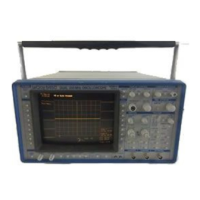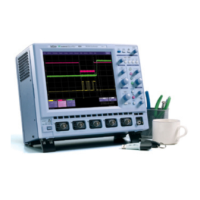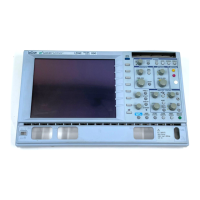|
|
3
I
GPIB OPERATION
GPIB STRUCTURE
This section describes how to remotely control the oscilloscope via
the GPIB. Topics discussed include interface capabilities, address-
ing, standard bus commands, and polling schemes.
The GPIB is like an ordinary computer bus, except that it inter-
connects independent devices via a cable bus whereas a computer
has its circuit cards interconnected via a backplane bus. The GPIB
carries program messages and interface messages:
¯ Program messages, often called device-dependent messages,
contain programming instructions, measurement results, in-
strument status and waveform data. Their general form is
described in Section 2.
¯
Interface messages manage the bus itself. They perform func-
tions such as initializing the bus, addressing and unaddressing
devices and setting remote and local modes.
Devices on the GPIB can be listeners, talkers, and/or controllers.
A talker sends program messages to one or more listeners. A con-
troller manages the flow of information on the bus by sending
interface messages to the devices.
The oscilloscope can be a talker or a listener, but not a controller.
The host computer, however, must be able to act as a listener,
talker and controller. For details on how the controller configures
the GPIB for specific functions, refer to the GPIB interface man-
ufacturer’s manual.
INTERFACE
CAPABILITIES The interface capabilities of the oscilloscope include the following
IEEE 488.1 definitions:
AH1
SH1
L4
T5
SR1
RL1
DC1
DT1
PP1
CO
E2
Complete Acceptor Handshake
Complete Source Handshake
Partial Listener Function
Complete Talker Function
Complete Service Request Function
Complete Remote/Local Function
Complete Device Clear Function
Complete Device Trigger
Parallel Polling: remote configurability
No Controller Functions
Tri-state Drivers
11

